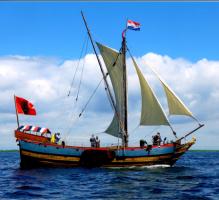 In 1614, the Onrust, captained by Dutch merchant explorer Adriaen Block, was the first European vessel to explore the Connecticut River. This summer, a replica of Block’s ship is returning to the river in a collaboration between the Connecticut River Museum in Essex, CT and the Onrust Project, offering cruises on the river and educational programming at dockside.
In 1614, the Onrust, captained by Dutch merchant explorer Adriaen Block, was the first European vessel to explore the Connecticut River. This summer, a replica of Block’s ship is returning to the river in a collaboration between the Connecticut River Museum in Essex, CT and the Onrust Project, offering cruises on the river and educational programming at dockside.
The original Onrust was built by Block and his crew in the winter of 1614 somewhere in New York harbor. The ship, Tyger , on which Block had sailed from Holland to New York, had been destroyed by fire the previous winter. Onrust , which means “restless” in Dutch, was the first ship to be built in what is now New York State. Sailing the Onrust into Long Island Sound, along the coast of Rhode Island and on to Cape Cod, Block drew the first accurate charts of the southern New England coast. In October of 1614, Block rendezvoused with another Dutch ship on Cape Cod and sailed back to the Netherlands. The Onrust, however, would go on to be used to 1616 to explore the Delaware River under the command of Cornelius Hendrickson.
The replica Onrust was built by the non-profit Onrust Project between 2006 and 2009 at the Mabee Farm Historic Site in Rotterdam Junction, NY, using traditional Dutch shipbuilding techniques. Since 2009, the Onrust has served as a floating museum providing the public with a living history experience of 17th century life and maritime exploration.
The Connecticut River Museum is located at 67 Main Street, Essex, CT 06426. To learn more, click here.
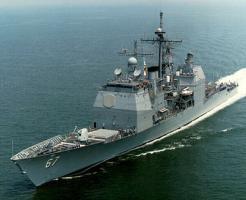 Better a court martial than a funeral. On June 8th, Gas Turbine Systems Technician (Mechanical) 3rd Class Peter Mims was reported missing on the Ticonderoga-class guided missile cruiser USS Shiloh, and presumed to have fallen overboard. His disappearance triggered a a massive, 50-hour search-and-rescue effort off the coast of Japan that included Japanese Coast Guard and naval forces. Presumed dead after not being located in the search, Mims was found to be hiding in one of the cruiser’s engine rooms.
Better a court martial than a funeral. On June 8th, Gas Turbine Systems Technician (Mechanical) 3rd Class Peter Mims was reported missing on the Ticonderoga-class guided missile cruiser USS Shiloh, and presumed to have fallen overboard. His disappearance triggered a a massive, 50-hour search-and-rescue effort off the coast of Japan that included Japanese Coast Guard and naval forces. Presumed dead after not being located in the search, Mims was found to be hiding in one of the cruiser’s engine rooms. 
 A year ago we posted,
A year ago we posted, 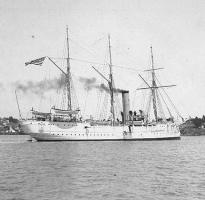 Researchers are holding
Researchers are holding 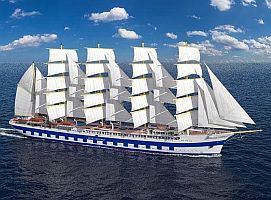 We have been following the progress of
We have been following the progress of 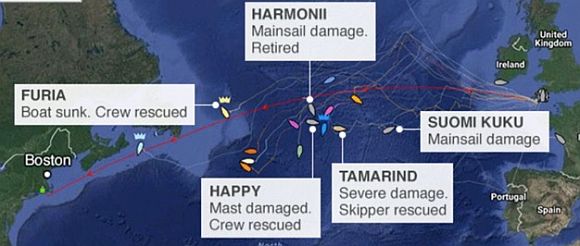
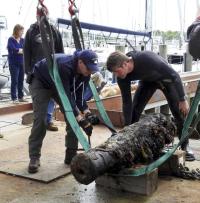 US Navy archaeologists have retrieved a cannon which they believe came from
US Navy archaeologists have retrieved a cannon which they believe came from  This is only slightly nautical, but I find it interesting, nevertheless. China has opened a floating solar power farm. Unlike offshore wind power, the facility is not at sea. The 40-megawatt solar power plant is floating over what was once an open-pit coal mine, which has now flooded forming a lake. The plant is more efficient because the lake’s water provides to the panels, inverters and other mechanical components.
This is only slightly nautical, but I find it interesting, nevertheless. China has opened a floating solar power farm. Unlike offshore wind power, the facility is not at sea. The 40-megawatt solar power plant is floating over what was once an open-pit coal mine, which has now flooded forming a lake. The plant is more efficient because the lake’s water provides to the panels, inverters and other mechanical components. In 1614, the
In 1614, the  If you are around New York harbor on Thursday, June 8th, from 6 — 7:45 PM, stop by the historic
If you are around New York harbor on Thursday, June 8th, from 6 — 7:45 PM, stop by the historic  One last post (at least for the immediate future) on the historic schooner
One last post (at least for the immediate future) on the historic schooner 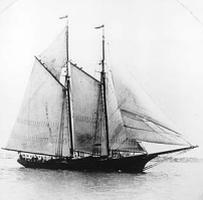
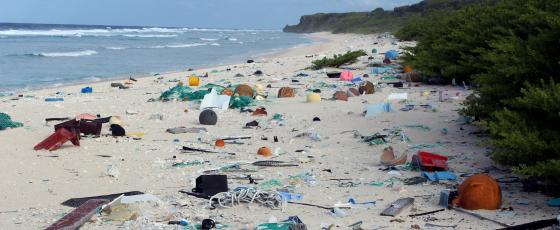
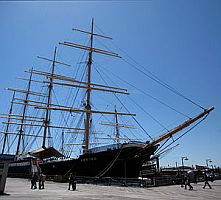 A recent post on the
A recent post on the  The
The  They usually make it look so easy. The
They usually make it look so easy. The 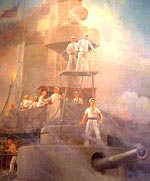
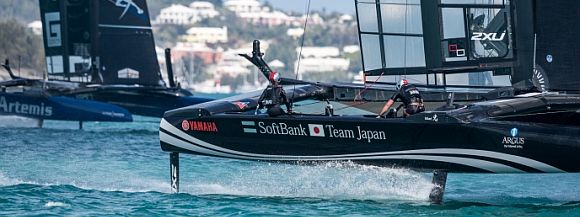 After being
After being